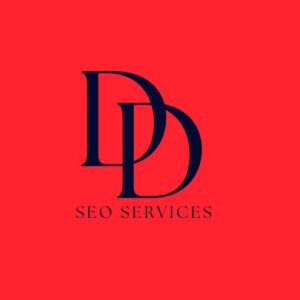Why Custom Website Design and SEO Matter
In digital marketing, custom website design search engine optimization is the golden ticket to standing out online and attracting local customers. Let’s get straight to the point:
- Custom websites offer a unique, tailored look that matches your brand and engages visitors.
- Optimized structure helps search engines understand your site, improving your online visibility.
- User experience is key: a well-designed site keeps visitors interested and encourages them to take action.
When you weave SEO into every aspect of your custom website, you’re not just building a site; you’re creating a robust marketing tool that attracts and retains customers. Keep reading to learn how to fuse web design and SEO to boost your online presence and drive more traffic to your business.
The Importance of Custom Website Design for SEO
Creating a custom website design doesn’t just make your site look good. It’s also a powerful way to improve your search engine optimization (SEO). Here’s why it’s so important:
SEO Benefits
A well-designed custom website can significantly boost your SEO. When your site is tailored to your business, you can better target specific keywords, create unique content, and design a user-friendly experience. This helps search engines understand your site and rank it higher.
For example, Amazon optimized their site speed to improve user experience. They found that every 100 ms delay in page load time led to a 1% loss in revenue. This shows how crucial site speed is for both SEO and business success.
User Experience
User experience (UX) is another critical factor. A custom website design allows you to create a seamless, intuitive experience for your visitors. Good UX keeps people on your site longer, reduces bounce rates, and encourages more interactions.
Google’s algorithm takes UX into account. If your site is easy to navigate and engaging, it will rank higher. A study by Forrester found that every dollar invested in UX brings $100 in return, an ROI of 9,900%. So, investing in custom design pays off.
Search Engine Rankings
Your search engine rankings depend on several factors, including site architecture, content quality, and mobile optimization. Custom websites let you optimize these elements more effectively than generic templates.
For instance, GitHub uses clean, organized code, which helps search engines crawl and index their site efficiently. This clean code contributes to their high rankings for many tech-related keywords.
Moreover, a custom website design allows for advanced functionality like interactive features and custom booking systems. These elements not only enhance UX but also signal to search engines that your site is valuable and relevant.
Real-World Example
Consider D&D SEO Services. We focus on creating custom websites that are SEO-friendly from the ground up. By integrating SEO best practices into the design process, we’ve helped numerous clients achieve higher rankings and increased traffic.
One client, a local roofing company, saw a 50% increase in organic traffic within three months of launching their custom website. This was due to a combination of optimized site architecture, high-quality content, and targeted keyword strategies.
Key Takeaways
- Custom website design enhances SEO by allowing better keyword targeting and content creation.
- Good user experience keeps visitors engaged and improves your search rankings.
- Clean code and advanced functionality make it easier for search engines to crawl and index your site.
By focusing on these elements, you can create a custom website that not only looks great but also performs well in search engines. This is the foundation for a successful online presence.
Keep reading to learn more about the fundamentals of SEO-friendly custom website design.
Fundamentals of SEO-Friendly Custom Website Design
Building a custom website that ranks well in search engines requires attention to several key elements. Here, we will cover the fundamentals such as domains, hosting, and content management systems (CMS).
Domains and Hosting
Domains
Your domain name is the gateway to your website. It’s crucial to have one canonical domain to avoid confusion and enhance SEO. For example, if your business is “Bowler Hat” and you operate in the UK, a domain like www.bowlerhat.co.uk is ideal. Any variations should redirect to this main URL.
A brand-led domain is usually the best choice. Avoid stuffing keywords into the domain name – that tactic is outdated and ineffective.
Hosting
Cheap hosting might save you a few bucks, but it can hurt your SEO. Fast hosting improves user experience and keeps visitors on your site longer. Google favors fast-loading sites, so investing in good hosting is essential.
Ensure your hosting has high uptime and is situated where your audience is. For instance, if your primary audience is in the US, your hosting should also be based there.
Content Management Systems (CMS)
WordPress
WordPress is a popular CMS due to its flexibility and ease of use. It allows for easy optimization and has a plethora of plugins that can help with SEO, such as Yoast SEO.
Platform-Specific Hosting
If you choose WordPress, consider WordPress-specific hosting. These hosting services are optimized for WordPress, offering better performance and security.
Ease of Optimization
Choose a CMS that makes it easy to implement SEO best practices. WordPress is often a go-to option, but other platforms can also be effective, depending on your needs.
By focusing on these fundamental aspects, you can ensure that your custom website is well-optimized for search engines from the start. Next, we’ll delve into the key elements of custom website design search engine optimization, such as crawling, indexing, and link structure.
Key Elements of Custom Website Design Search Engine Optimization
Crawling and Indexing
For your custom website to rank well, search engines need to crawl and index your content efficiently. Here’s how to make it happen:
Text-Based Content
Ensure your main content is text-based. While images, videos, and PDFs are valuable, search engines still rely heavily on text to understand your site. This means your text should be well-written and optimized for your target keywords.
Internal Links
Internal links help search engines discover your content beyond the homepage. Use a clear and logical link structure to guide search bots through your site. For example, link from your homepage to key service pages, and from those service pages to relevant blog posts.
XML Sitemaps
An XML sitemap acts like a roadmap for search engines. It lists all the important pages on your site, making it easier for search bots to find and index your content. Submit your XML sitemap to Google Search Console to ensure all your pages get indexed.
URL Structure and Navigation
A well-structured URL and easy navigation are crucial for both users and search engines. Here’s how to optimize them:
Contextual URLs
Your URLs should be short, descriptive, and include your target keywords. For example, instead of using website.com/services/custom-id-4763829101, use website.com/custom-web-development. This helps search engines understand what the page is about and improves your rankings.
Text-Based Navigation
Use text-based navigation instead of image-based links. Text links are easier for search engines to crawl and understand. Plus, they load faster, improving user experience.
User-Friendly Design
Your website should be easy to navigate. Follow a logical structure, like a filing cabinet:
- Cabinet: Your website
- Drawer: High-level category
- Folder: Subcategory
- File: Individual document/page
For example, if you offer SEO services, your structure might look like this:
- Home
- Services
- SEO
- SEO Audits
- Local SEO
This structure helps users and search engines find relevant content quickly.
By focusing on these key elements, you can significantly improve your custom website’s search engine optimization. Next, we’ll explore the importance of mobile optimization and page speed in ensuring your site ranks well and provides a great user experience.
Mobile Optimization and Page Speed
Mobile-Friendly Design
In today’s digital landscape, having a mobile-friendly design is crucial for both user experience and search engine optimization. With mobile-first indexing, Google primarily uses the mobile version of a site for indexing and ranking. This means if your site isn’t optimized for mobile, you could be missing out on valuable traffic.
Responsive design is essential. It ensures your website adapts to various screen sizes, providing a seamless experience whether users are on a smartphone, tablet, or desktop. This fluidity not only improves usability but also signals to search engines that your site is user-friendly, which can boost your rankings.
To check how well your site performs on mobile, use Google’s mobile-friendly test. This tool provides feedback on mobile usability issues and offers suggestions for improvement. Additionally, tools like PageSpeed Insights can help you identify areas to enhance both mobile and desktop speed, ensuring a smooth user experience across all devices.
Improving Page Speed
Page speed is a critical factor for SEO and user satisfaction. Slow-loading sites can lead to higher bounce rates and lower engagement, which can negatively impact your search rankings. Here are some key strategies to improve your page speed:
- Web Hosting: Choose a reliable hosting provider that offers fast loading times and high uptime rates. This ensures your site is always available and performs well under high traffic volumes.
- Optimize File Sizes: Compress images and other media without losing quality. Use the right formats and specify image dimensions to reduce load time. Tools like image resizers can help in this process.
- Minimize Plugins: Too many plugins can slow down your site. Only use essential plugins and ensure they are optimized for performance.
- Streamline Coding/Scripts: Clean up your code by removing unnecessary scripts and styles. Minify CSS, JavaScript, and HTML to reduce the size of your files and speed up load times.
- Enable Browser Caching: Store frequently accessed resources locally on the user’s device. This reduces server requests and speeds up page loading times on subsequent visits.
By focusing on these areas, you can significantly enhance your site’s performance, leading to better user engagement and higher search engine rankings.
Next, we’ll delve into content optimization techniques for custom websites, ensuring your site not only looks great but also performs exceptionally well in search results.
Content Optimization for Custom Websites
Keyword Targeting
Keyword targeting is essential for custom website design search engine optimization. Start with thorough keyword research using tools like Google Keyword Planner, SEMrush, or Moz Keyword Explorer. Identify keywords that your audience is searching for, and prioritize both short head terms (e.g., “custom software”) and long-tail variations (e.g., “custom software development services”).
Pro tip: Track your keywords in a spreadsheet, noting their difficulty scores, monthly search volume, and relevance to your business.
Once you have your keywords, ensure they are used consistently across your site. Include them in:
- Page titles
- Headings (H1, H2 tags)
- Image file names and ALT text
- First 100 words of page content
- URL slugs
However, avoid “over-optimization.” Your content should read naturally and be helpful to your users.
HTML Title Tags and Meta Descriptions
HTML title tags are a crucial element for SEO. They directly influence your search engine rankings and should be optimized carefully.
Best practices for title tags:
- Place keywords at the beginning: This makes them more prominent.
- Keep the length around 50 to 60 characters: This ensures the entire title is displayed in search results.
- Use natural language: Keywords should fit seamlessly into the title.
- Use dividers: Separate elements like category and brand with dividers.
- Focus on click-through rates: Make titles compelling to encourage clicks.
Meta descriptions don’t directly affect rankings but are vital for click-through rates. They act as an advertisement for your page in search results.
Best practices for meta descriptions:
- Truthfully describe the page content: Ensure it reflects what users will find.
- Advertise the page: Make it compelling to improve click-through rates.
- Consider the user’s thought process: Think about why they would click on your page.
- Include keywords naturally: This helps search engines highlight relevant terms.
Pro tip: If you have tons of meta descriptions to write, tools like ChatGPT can assist in generating them efficiently.
Heading Tags
Heading tags help structure your content, making it easier for both users and search engines to understand. They create a hierarchy within your document, improving readability and SEO.
Best practices for heading tags:
- Use an H1 for the main title: Each page should have one H1 that describes its content.
- Include main keywords in H1: This helps search engines understand the page’s focus.
- Use H2 and H3 for subheadings: These break down the content into manageable sections.
- Align headings with content: Ensure headings accurately describe the sections they introduce.
Example of a well-structured page:
“`html
Custom Software Development Services
Why Choose Custom Software?
Benefits of Custom Software
How We Develop Custom Software
Our Custom Software Solutions
Custom E-commerce Development
Custom CRM Systems
“`
Pro tip: Use captions, titles, and alt text to provide as much contextual information as possible about your images.
By implementing these content optimization techniques, your custom website will not only rank higher but also provide a better user experience, ultimately leading to increased engagement and conversions.
Next, we’ll explore advanced SEO techniques for custom websites, including schema markup and social sharing buttons.
Advanced SEO Techniques for Custom Websites
Schema Markup
Schema markup is a powerful tool that helps search engines understand your website’s content more effectively. Think of it as adding labels to your site’s information, making it easier for search engines like Google to interpret and display your data.
For example, if you run a local business, you can use the LocalBusiness schema to specify your operating hours, address, and phone number. This not only makes your information clearer to search engines but also improves your visibility in local search results.
Fact: According to D&D SEO Services, 97% of search engine users search online to find a local business.
High-Quality Content
Creating high-quality content is essential for both user engagement and SEO. Your content needs to be original, relevant, and valuable to your audience. Google favors websites that regularly update their content, so keep your site fresh with new blog posts, articles, and updates.
Case Study: Apple’s website is a great example of high-quality content paired with a clean, user-friendly design. Their use of large, high-quality images and intuitive navigation enhances the user experience, making it easier for users to find what they need.
Strong CTAs and Social Sharing
Strong Call-To-Actions (CTAs) guide your users toward the actions you want them to take, whether it’s making a purchase, signing up for a newsletter, or downloading a resource. Effective CTAs can significantly boost user interaction and conversions.
Incorporating social sharing buttons is another vital strategy. These buttons allow users to share your content on their social networks, increasing your site’s visibility and reach. It’s an easy way to drive more traffic and improve your SEO.
Example: Airbnb’s mobile-optimized website features a responsive design and an easy-to-use booking process. Their use of social sharing buttons helps widen their reach and improve user engagement.
By leveraging these advanced SEO techniques, your custom website can achieve higher search engine rankings and provide a better user experience.
Next, we’ll address some frequently asked questions about custom website design search engine optimization.
Frequently Asked Questions about Custom Website Design Search Engine Optimization
How to do SEO on a custom website?
Optimizing a custom website for SEO involves several key steps:
- Conduct Keyword Research: Use tools like Google Keyword Planner to find relevant keywords. Focus on long-tail keywords for targeted traffic.
- Optimize Site Architecture: Ensure important pages are accessible within 1-2 clicks from the homepage. Use a clear, logical structure.
- Implement Title Tags and Meta Descriptions: Craft unique, keyword-rich titles and descriptions for each page to improve click-through rates.
- Optimize URL Structure: Use short, keyword-rich URLs. Avoid complex structures and ensure all URLs are descriptive.
- Create High-Quality Content: Develop original, engaging content that provides value to users. Use keywords naturally throughout the content.
- Improve Page Speed: Optimize images, minimize code, and use fast, reliable hosting to ensure quick loading times.
- Ensure Mobile Optimization: Implement a responsive design to ensure your site works well on all devices. Use Google’s Mobile-Friendly Test to check.
- Set Up Analytics: Use Google Analytics and Search Console to monitor performance, track keywords, and identify areas for improvement.
By following these steps, you can ensure your custom website is optimized for search engines and provides a great user experience.
Are custom websites better for SEO?
Yes, custom websites often have an edge over non-custom websites when it comes to SEO. Here’s why:
- Tailored Design: Custom websites are built with your specific business needs in mind, allowing for better alignment with SEO best practices.
- Optimized Structure: They can be designed with a clear, logical structure that search engines can easily crawl and index.
- Unique Content: Custom websites often feature unique, high-quality content that is more relevant to your audience, improving search rankings.
- Better Performance: They can be optimized for faster load times and better mobile responsiveness, both critical factors for SEO.
- Flexibility: Custom websites offer more flexibility for implementing advanced SEO techniques like schema markup and custom CTAs.
Example: A study found that businesses with custom websites saw a 45% increase in organic traffic compared to those using generic templates.
What is search engine optimization website design?
Search engine optimization website design refers to the process of creating websites that are optimized for search engines from the ground up. This involves:
- Keyword Integration: Incorporating relevant keywords into titles, headings, and content.
- Technical SEO: Ensuring the website’s code and structure are optimized for search engines.
- Mobile Optimization: Designing the site to be fully responsive and mobile-friendly.
- Fast Load Times: Using efficient coding and fast hosting to ensure quick page loads.
- User Experience: Creating a user-friendly design that keeps visitors engaged and reduces bounce rates.
Fact: Websites that load within 2 seconds have a 15% higher conversion rate than those that take longer.
By focusing on these elements, you can create a website that not only ranks well in search engines but also provides a great experience for your users.
Next, let’s wrap up with a conclusion on how D&D SEO Services can help you achieve your SEO goals with custom website design.
Conclusion
At D&D SEO Services, we specialize in creating custom website designs that are optimized for search engines from the ground up. Our personalized strategies focus on every aspect of SEO, ensuring your site not only ranks well but also provides an exceptional user experience.
Personalized Strategies
We understand that every business is unique. That’s why we tailor our SEO strategies to meet your specific needs. From keyword research to content optimization, we cover all the bases to make sure your custom website performs at its best.
Local SEO
Local SEO is crucial for businesses targeting specific geographic areas. We help you optimize your site to rank higher in local searches, making it easier for potential customers in your area to find you. This includes optimizing for local keywords, managing online reviews, and ensuring your business is listed in local directories.
Web Design and AI-Driven Solutions
Our web design services are integrated with AI-driven solutions to keep your site ahead of the curve. AI helps us analyze data more efficiently and make more informed decisions about your SEO strategy. This means your website will always be optimized according to the latest trends and algorithm updates.
Online Visibility and Business Growth
Our ultimate goal is to enhance your online visibility and drive business growth. A well-optimized custom website not only attracts more visitors but also converts them into loyal customers. With our comprehensive SEO services, you can expect to see a significant improvement in your search engine rankings, user engagement, and overall ROI.
Ready to take your website to the next level? Contact D&D SEO Services today to get started on your custom website design and SEO journey. Let’s build a website that ranks and grows your business!
By focusing on custom website design search engine optimization, you can ensure your site stands out in search results and provides a seamless experience for your users. With the right strategies and expert guidance, achieving your SEO goals is within reach.








